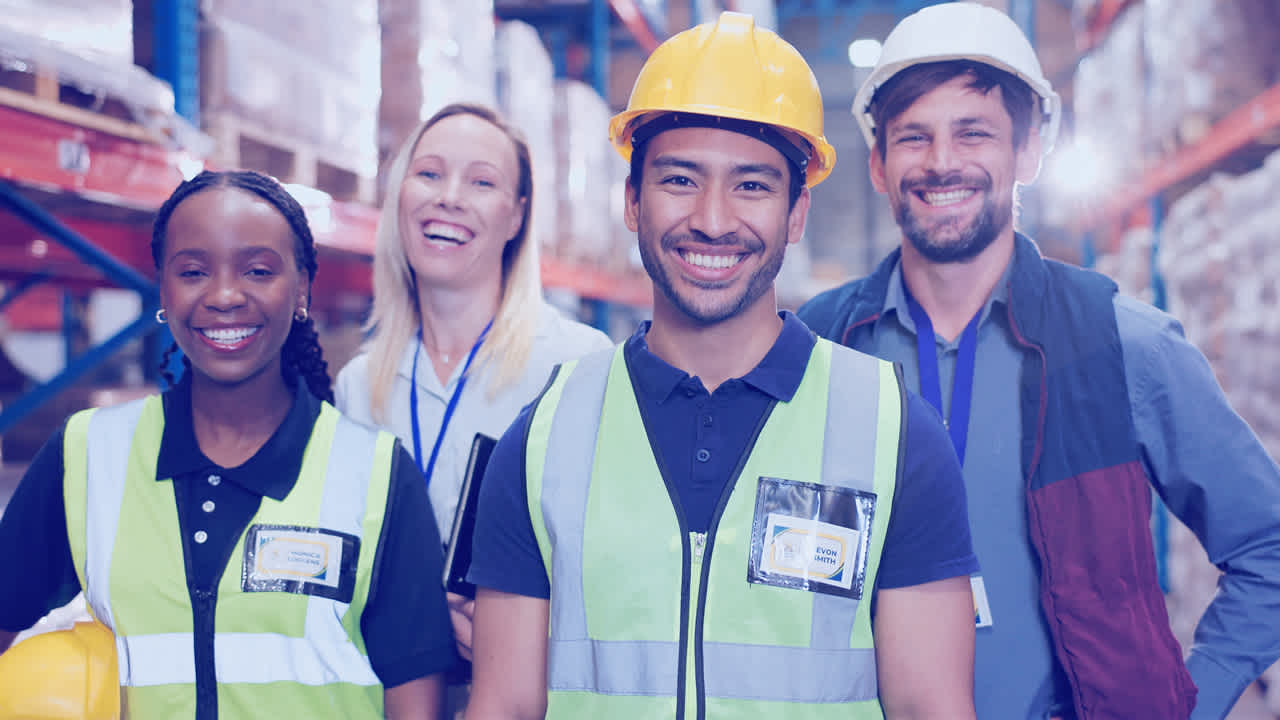Our guide explores the intricacies of eNPS scores, and their significance in HR metrics and how they can provide invaluable insights into your company's overall health.
Get ready to discover the structuring of an eNPS survey and categorise responses for accurate calculations.
In this blog post, we will go into the details of eNPS and empower you to unlock the full potential of your organisation's greatest asset—your employees.
Definition eNPS
eNPS is short for Employee Net Promotor Score.
It's a score used by companies to measure employee engagement and employee satisfaction.
This way of measuring employee satisfaction is based on the same logic as the perhaps more commonly known metric Net Promoter Score (customer NPS), which companies use to calculate customer satisfaction and measuring customer loyalty.
In this scenario, HR is the company, and employees are considered the customers.
It's common for HR departments to use the eNPS as one of their main KPIs.
Benefits of measuring Employee Net Promoter Score
An overview of engagement and loyalty
One big benefit of the Employee Net Promotor Score is that it’s an easy way to quickly understand how loyal and engaged a company’s employees are.
A widely used method great for benchmarking
As more and more companies start using eNPS, it’s becoming an increasingly relevant number to use for benchmarking.
One simple question reveals a lot of information
One benefit of the eNPS is the simplicity.
It’s just one simple question, so no risk of survey fatigue if you repeat it.
Calculating eNPS can help you reduce staff turnover
If your eNPS score is low or decreasing, this is an indicator that there are issues that need to be addressed if you are to keep your talent.
You can turn detractors and passives into promoters
One benefit of the eNPS score is that it’s never final. It’s not static. By continuously measuring it, you can also continuously improve it.
Better decision making
Understand how engaged and satisfied your workforce is to make informed decisions about policies, benefits or changes within your organisation.
Predicting employee behaviour
High eNPS scores could indicate lower turnover rates and higher productivity levels. Low scores might signal potential issues that need addressing before they escalate into larger problems.
Cultural insight
Regularly tracking your company's eNPS score can provide valuable insights into its culture - helping identify areas where improvements are needed or where things are working well.
Using eNPS to measure engagement helps organisations keep track of overall employee sentiment while also providing actionable data points for improving workplace conditions - thereby boosting productivity and job satisfaction levels over time.

How to measure eNPS
Structure of the eNPS survey
The eNPS survey is designed for simplicity and ease-of-use.
Employees are asked to rate their likelihood of recommending the workplace on a scale from 0 (not at all likely) to 10 (extremely likely), providing HR managers with an objective measure of employee sentiment.
This allows HR managers to quantify employee sentiment towards their workplace.
The survey consists of one very straightforward eNPS question that everyone in the organisation is asked to answer. The survey question is:
“On a scale from 0-10, how likely are you to recommend this company to your family or friends?”
The answer options range from 0 to 10. 10 means “Extremely likely,” and 0 means “Not at all likely.”
Following the same logic as with NPS calculations, the answers are then divided into three categories:
0-6: Detractors. These are the employees who are highly dissatisfied with the organisation. There is a serious risk that they may spread negative word of mouth.
7-8: Passives. This group of employees are neither emotionally invested nor disengaged in the company.
9-10: Promoters. Those employees are very loyal to the organisation and likely to talk positively about the company.
Formula for measuring Employee Net Promoter Score
The Employee Net Promoter Score is calculated by using the following formula:
eNPS = % Promoters - % Detractors
The result can range from -100 to +100.
Or, if we put it in words, you arrive at the employee Net Promoter Score by subtracting the percentage of detractors from the percentage of promoters and multiplying the number you get with 100. The score is always reported as a whole number and not as a percentage.
Related reading: Employee engagement surveys and benchmark data
This formula produces a range between -100 (everybody is a detractor) up to +100 (everyone is a promoter). An eNPS score above zero signifies more promoters than detractors which can be considered good while anything over +50 indicates excellent employee satisfaction. (source)
Decoding your company's ENPS score
It shows how loyal and engaged your employees are, which can impact productivity and morale. But to use this metric effectively, you need to know what a good ENPS score is.
What is a good eNPS score?
An eNPS can range from -100 to +100. A positive score means you have more promoters than detractors - a sign of healthy employee engagement. Here's a general guide to interpreting these scores:
0-20: 'Good'. You're doing something right with employee satisfaction, but there's room for improvement.
21-50: 'Excellent'. Your employees are highly engaged.
Above 50: Exceptional. Your staff are highly satisfied and engaged, and likely to promote your company externally.
Note that these interpretations aren't set in stone but serve as benchmarks.
Cultural differences may affect scoring tendencies, so compare results with similar companies in your region or sector.
Tracking changes over time will show whether initiatives to improve workplace culture are effective.
Significant improvement after implementing measures shows those strategies worked.
Consistently low or decreasing scores signal underlying issues affecting employee loyalty and engagement, which need addressing urgently.
A dynamic approach to managing ENPS scores allows organisations to measure and enhance workplace experience effectively.
In-depth eNPS correlation metrics by Eletive
Gain valuable insights with a detailed correlation analysis of eNPS scores andengagement drivers. Understand what promoters consistently praise and whatdetractors identify as areas of concern. These insights highlight what's workingeffectively and pinpoint areas that require further focus and improvement.

Eletive’s Advanced Insights empower managers and HR teams to identify theengagement drivers influencing both high and low eNPS scores, providing adeeper understanding of employee sentiment.

The impact of low or decreasing ENPS scores on organisational culture
An organisation's culture plays a crucial role in determining its ENPS score.
A consistently low or decreasing score could indicate underlying issues that need addressing, such as poor communication, work-life balance, employee development, or recognition for hard work.
By identifying these issues early on through regular pulse surveys, companies can take proactive steps towards improving their workplace environment and boosting their ENPS scores over time.
Tracking ENPS over time also allows companies to benchmark against industry standards, providing context for their efforts to increase engagement and set realistic goals moving forward.
Boost your company's eNPS score with pulse surveys
Regular pulse surveys are key to improving your company's eNPS score. By checking in frequently with employees, you can track changes in sentiment and make improvements to boost engagement levels.
The benefits of pulse surveys
Pulse surveys offer real-time feedback on employee sentiment, allowing HR managers to make timely interventions and inform strategic decision-making.
They also promote a culture of open communication, making employees feel heard and valued.
Improving your eNPS score with pulse surveys
Actionable feedback: Use survey feedback to make improvements and address employee concerns.
Frequent communication: Keep employees informed about survey results and planned actions.
Acknowledge improvements: Publicly acknowledge positive changes resulting from employee feedback.
Pulse surveys are crucial for creating an environment of continuous improvement and transparency, which fosters high levels of employee engagement. For more information on how to effectively implement pulse surveys, check out our feature page.

Conclusion
Measuring employee engagement and satisfaction is crucial for HR managers, and eNPS is an essential tool to achieve this.
A good eNPS score usually falls between 50-70, but it may vary depending on your company's size, industry, and other factors.
Regularly measuring and improving your company's eNPS will have significant benefits on organisational culture and employee retention rates; like Croisette who built a strong employer brand with Eletive.
FAQ
How to interpret eNPS results?
Interpret eNPS results by categorising responses into promoters, passives, and detractors, then subtract the percentage of detractors from the percentage of promoters to get your score.
What is a realistic eNPS score?
A realistic eNPS score varies by industry, but generally, a score above 0 is considered good, while a score above 50 is excellent.
What is the average eNPS score for tech companies?
The average eNPS score for tech companies is around 25, but this can vary depending on the size and culture of the company.
It's important to note that eNPS is just one tool for measuring employee engagement, and should be used in conjunction with other methods such as pulse surveys.

























